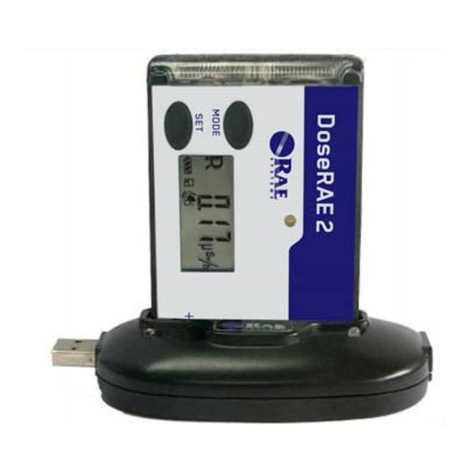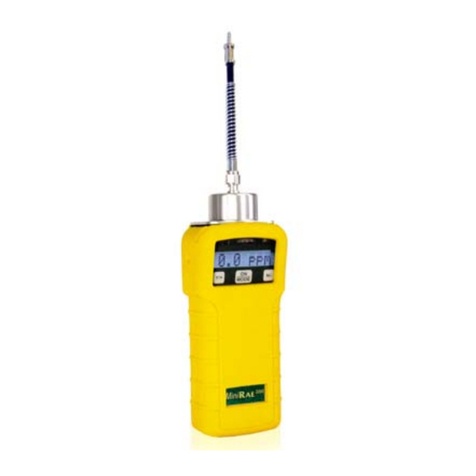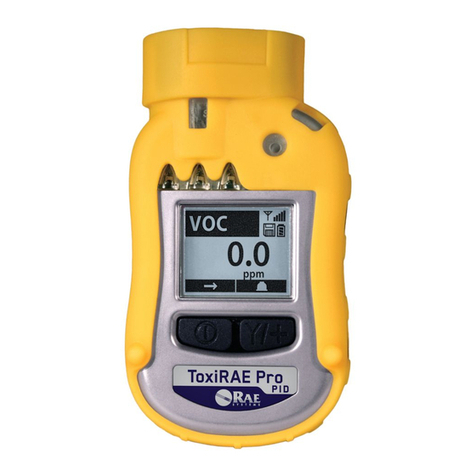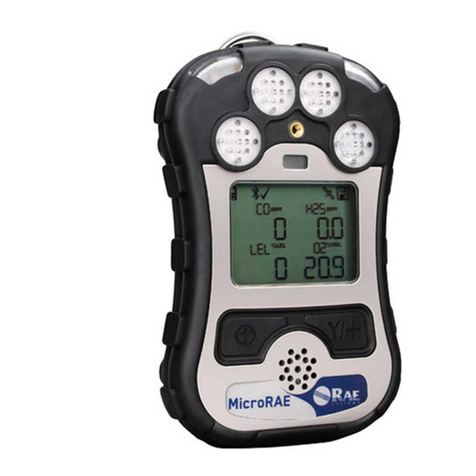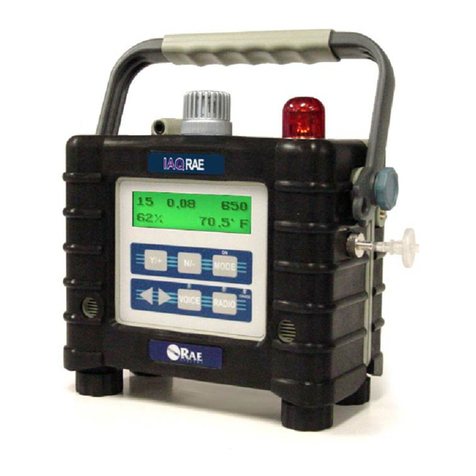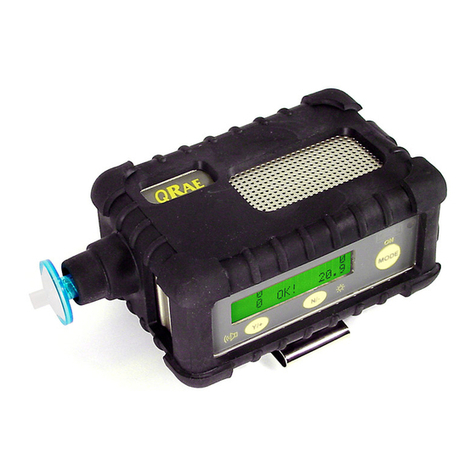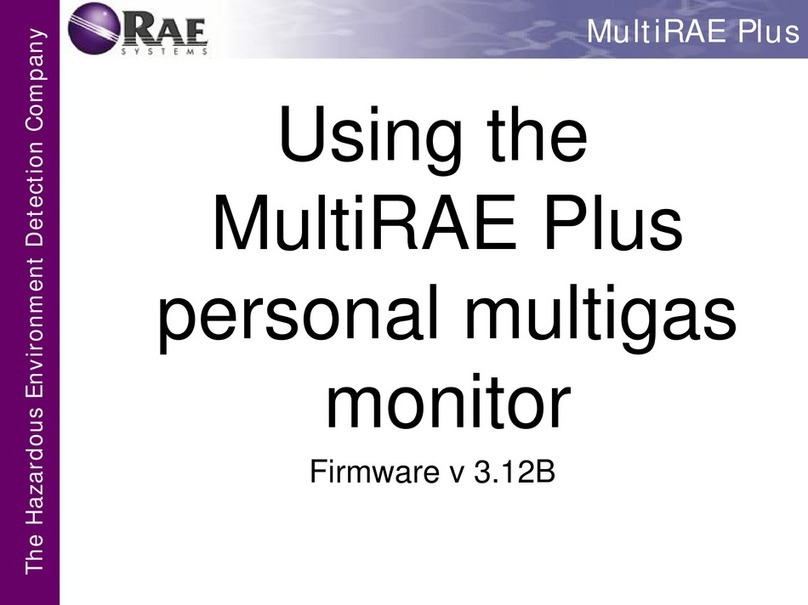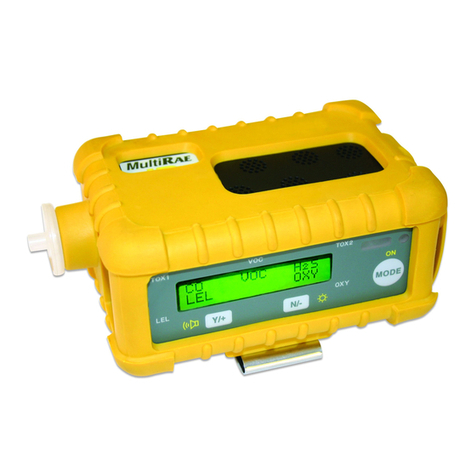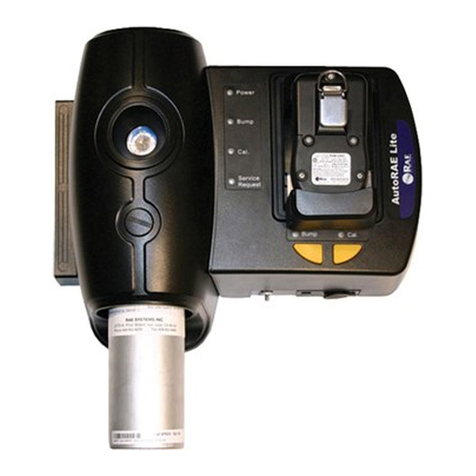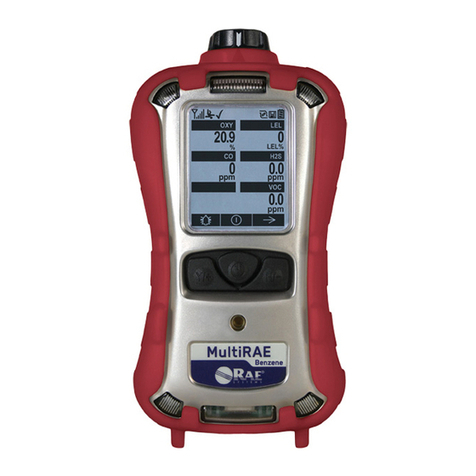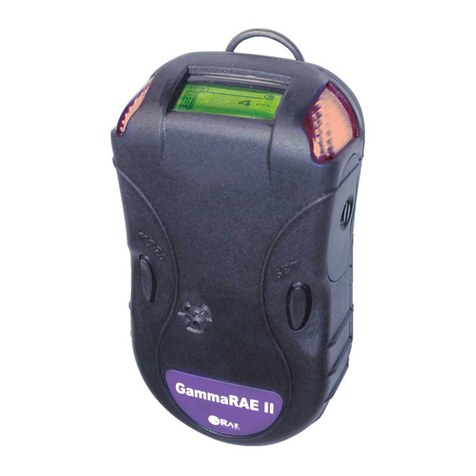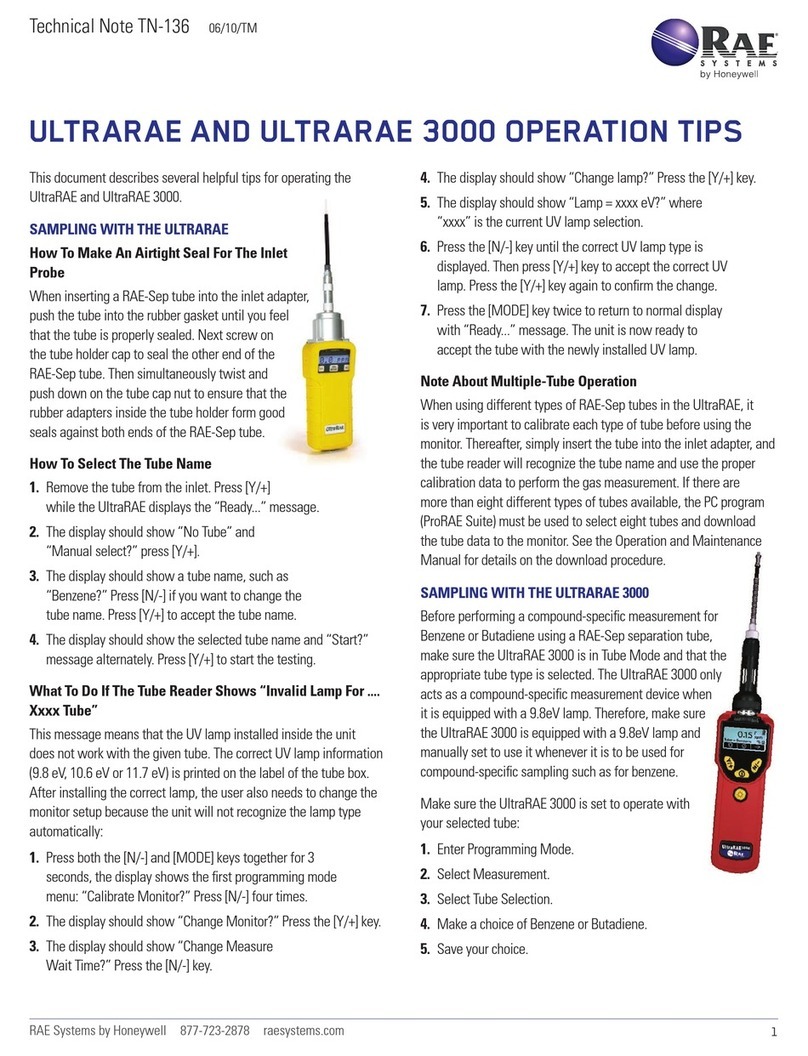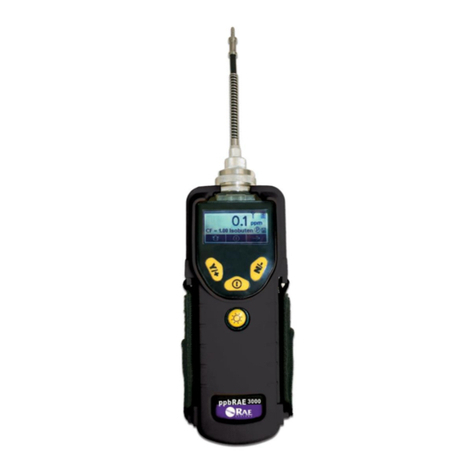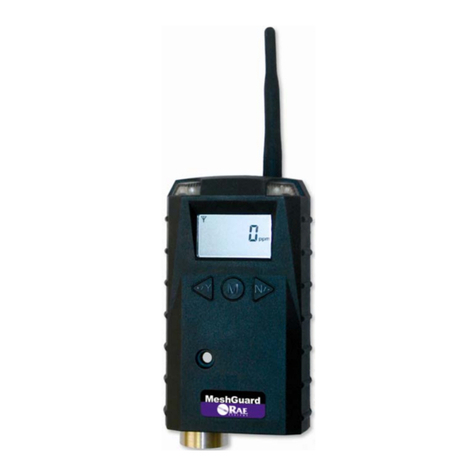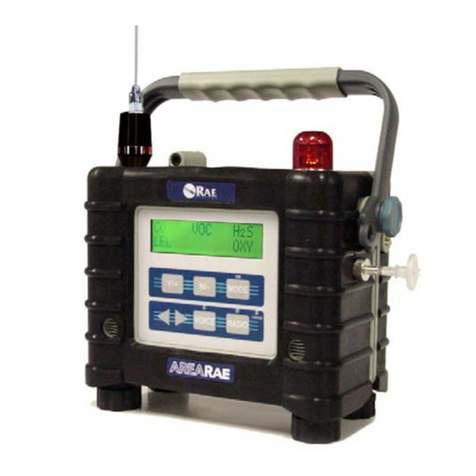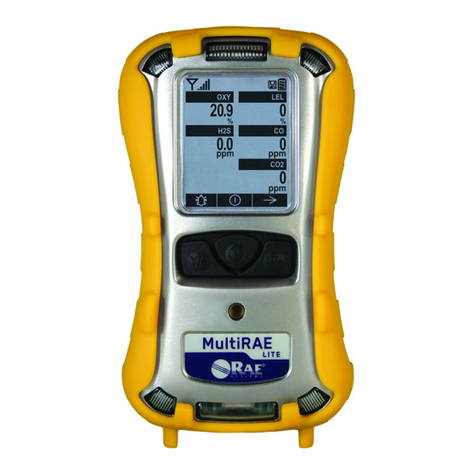
Span Calibration (Single Or Multi)
In Programming Mode, and with “Multi Sensor
Span” or “Single Sensor Span” highlighted:
1. Press [Y/+]. The screen displays the sensor(s) to be
calibrated.
· Multi: The list is shown.
· Single: Select asensor and press [Y/+].
2. Attach the calibration adapter or T connector.
Connect the calibration gas cylinder’s flow
regulator to the QRAE 3, and start the gasflow.
3. Press [Y/+] to start calibration.
4. Uponcompletion, a pass/fail calibration result
appears and the readings are shown (they should be
within ±10% of the span gas value).
Turn off the gas and remove the calibration
adapter or T connector.
Bump (Functional) Testing
RAE Systems recommends periodic bump testing to
confirm that the sensors and alarms are functional.
Test each sensor with an appropriate test gas in a
concentration not less than the sensor’s low alarm
setting. To pass, each sensor should go at least to a
low alarm. With the QRAE 3 in Normal Mode:
1. Connect thecalibration gas cylinder,flowregulator,
and calibrationadapter or Tconnector to the QRAE
3and start thegasflow.
2. Make sure theunitgoes intoatleast alowalarmfor
eachofthetestedsensors andthat thebuzzer
producesatleast two beeps per second,the LED
lights flash on and off, and the vibration alarm
functions.The displaybacklightshouldilluminate
and an alarmmessage should be showninthe
display.
3. Turn off the gas flow.
Remove the calibration adapter or Tconnector.
Multi Or Single Bump Testing
In Programming Mode, and with “Calibration/Multi
Bump” or “Calibration/SingleBump” highlighted:
1. Press [Y/+].The screen displays the sensor(s) to be
bump tested.
· Multi: The listisshown.
· Single: Select asensorand press[Y/+].
2. Attach the calibration adapter orT connector.
3. Connect the calibration gas cylinder’s flow regulator
tothe QRAE 3,and start the gasflow.
4. Press [Y/+] to start the bump test.
5. Upon completion,a screen labeled “Bump Test
Results” is shown with the sensor name(s) and
value(s), plus the word “Pass” or “Fail.”
6. Turn off the gas and remove the calibration
adapter or T connector.
If a sensor fails a bump test, try to calibrate it. If it
does not calibrate, it should be replaced.
Note: Users are recommended to refer to ISA-
RP12.13, Part II-1987 for general information
on installation, operation, and maintenance of
combustible gas detection instruments.
The QRAE 3 multi-gas detector must be
calibrated if it does not pass a bump test, or at
least once every 180 days, depending on use
and sensor exposure to poisons and
contaminants.
Wireless Operation
If your QRAE 3 is equipped with a wireless
modem, its settings are controlled via the menu
items under “Wireless.” In order to save time while
operating the QRAE 3 in a network, it is best to
configure the settings before taking the QRAE 3
into the field. Consult the User’s Guide for more
detailed instructions.
1. Enter Programming Mode bypressingandholding
[MODE]and[Y/+]simultaneouslyuntil the
passwordscreenappears.
2. Input the 4-digit password. (The default password
is “0000.”)
3. Press [MODE] repeatedly until “Wireless” is
highlighted.
4. Press [Y/+] to select WirelessSettings.
5. Checkthat theradio is turned on,the PANID
matchesthe PANID ofthe network,andmatches
the channelofthe network, too. Select Join Network
if a network is already established. You may also set
the off-networkalarm.
6. Whenyou aredonewiththe settings,press
[MODE] until “Exit” is highlighted,and[Y/+] to
return to the Programming menus. At “Exit,” press
[Y/+] to returntonormaloperation.
7. Start theEchoViewHost or RAELink3Mesh
wirelessmodemand ProRAE Guardian on your
computer.
8. Theantennaiconand signal-strengthbarsshouldbe
shown on the screen’s upper-left corner.
CheckthatdataisbeingreceivedbyProRAEGuardian
or EchoView Host.
